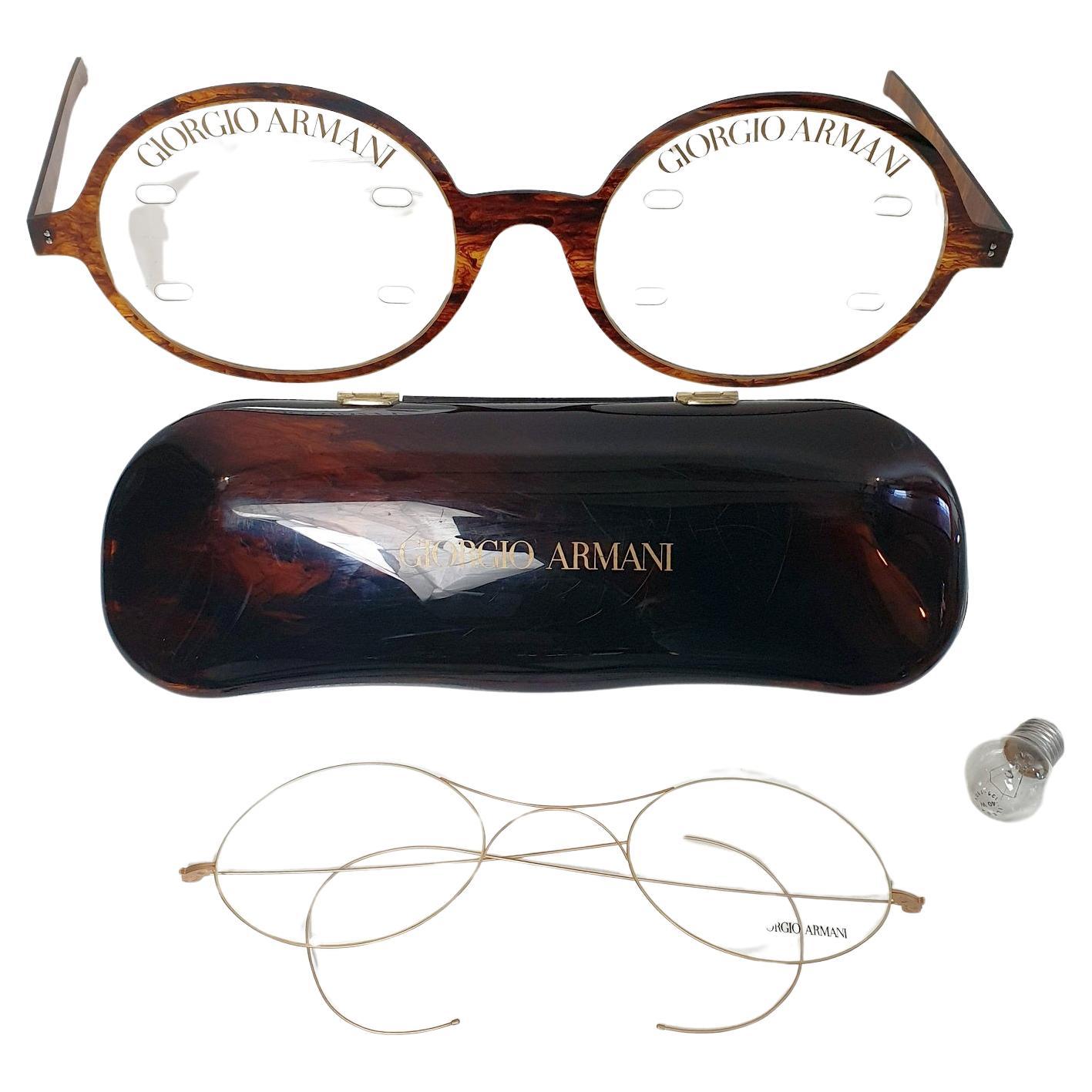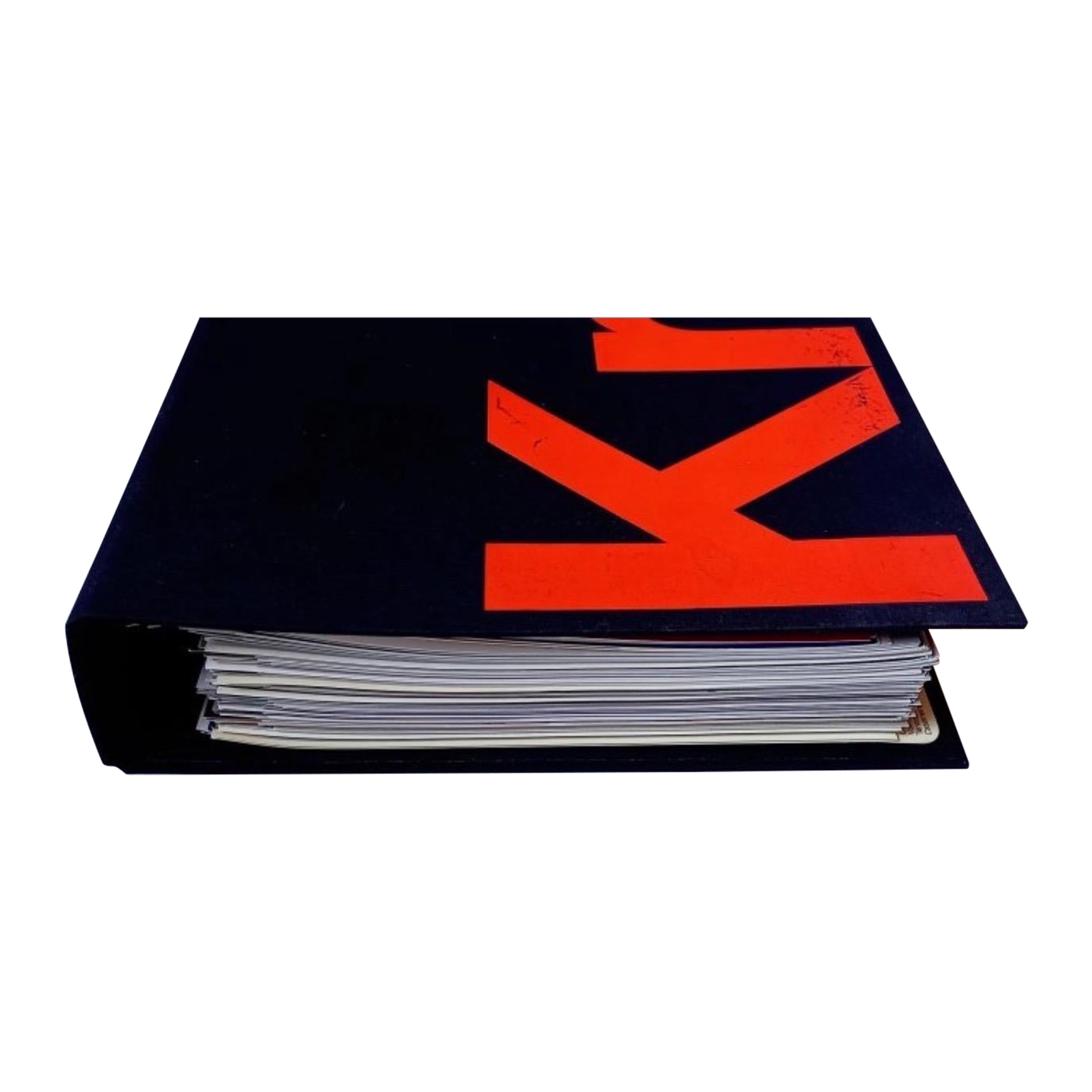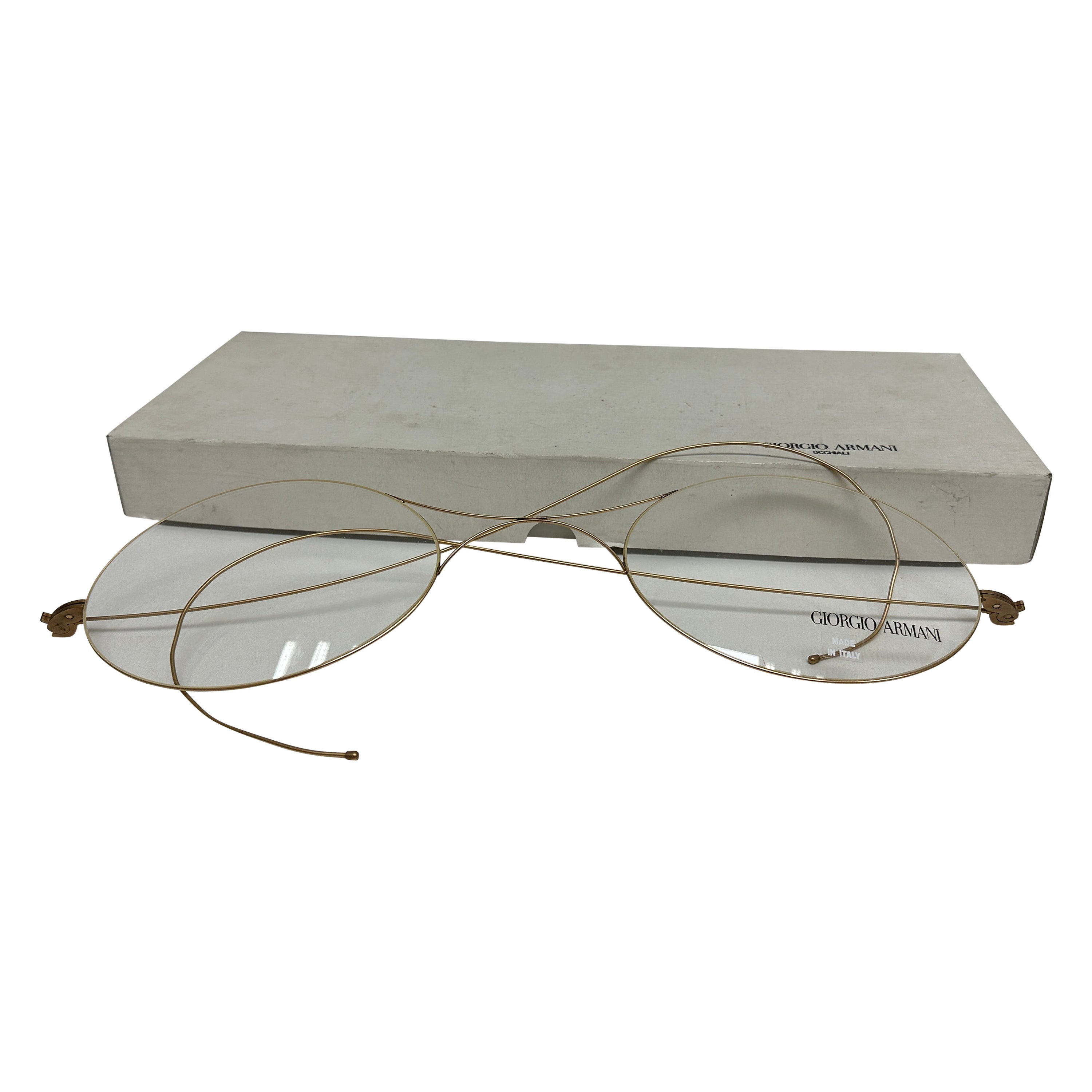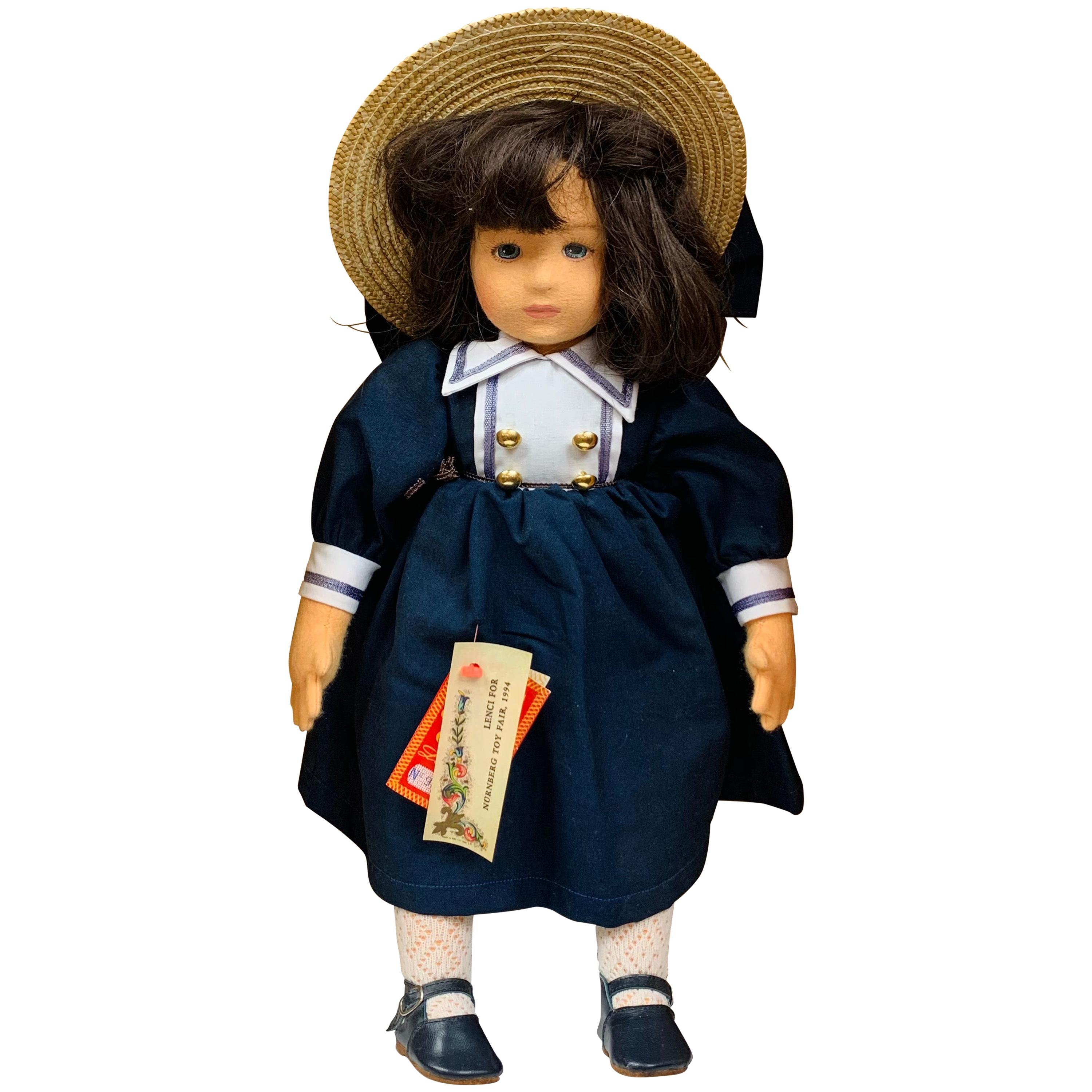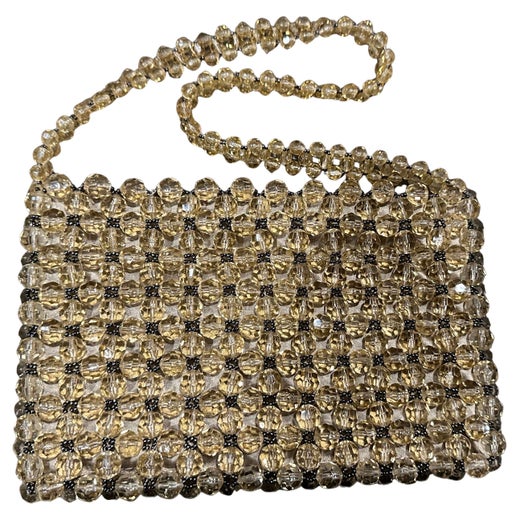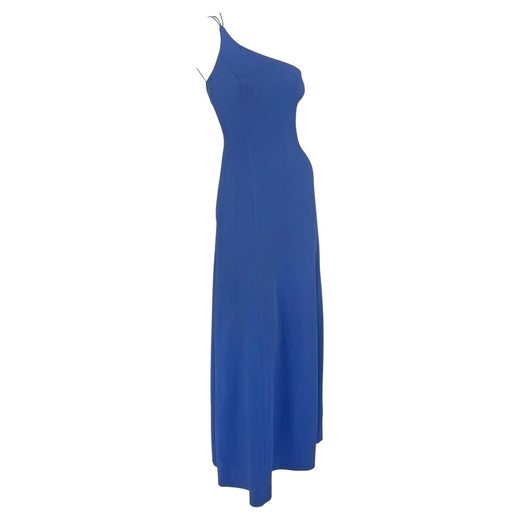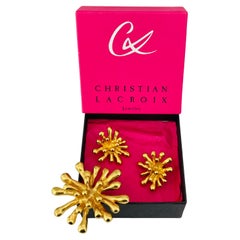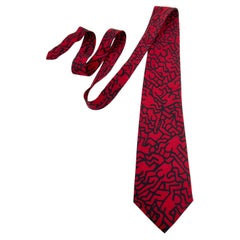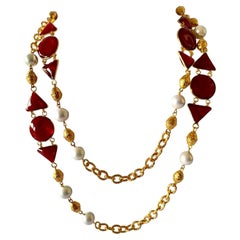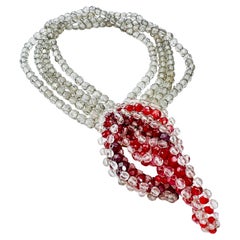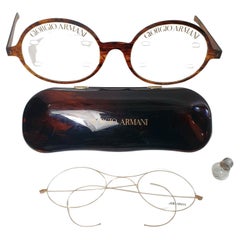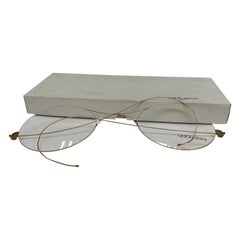Rare and Vintage 1980s Giorgio Armani Bracelet
About the Item
- Creator:Giorgio Armani (Manufacturer),Coppola e Toppo (Designer)
- Dimensions:Height: 0.5 in (1.27 cm)Width: 7.5 in (19.05 cm)Depth: 1.5 in (3.81 cm)
- Materials and Techniques:
- Place of Origin:
- Period:1980-1989
- Date of Manufacture:1980
- Condition:Small pin dent to back of one of the medallions, pictured.
- Seller Location:Hyattsville, MD
- Reference Number:1stDibs: LU98579808531
Coppola e Toppo
Postwar Italian fashion jewelry company Coppola e Toppo created flamboyant, larger-than-life accessories that earned the brand legions of admirers in luxury houses and retail shops all over Europe. Working with unconventional materials such as gunmetal, crystal beads and Murano glass, Coppola e Toppo became known for its range of distinctive, vibrantly colored necklaces, earrings, bracelets and more.
Today, Coppola e Toppo is revered as an iconic producer of costume, or fashion, jewelry, which is designed to accessorize with current fashions and typically made with inexpensive materials. The Venice-born Lyda Coppola (1915–86) worked in postwar Milan at a tailor and learned jewelry design with Czech jewelry maker Ada Pollitzer. She launched her jewelry house in the late 1940s, and when she was married, she added her surname Toppo to the company name and was supported by her brother Bruno Coppola in her endeavor.
Although a feature in Vogue that ran shortly after Coppola e Toppo took shape proved to be a significant piece of publicity for the Italian brand — which would soon design lavish confections for the likes of Lanvin, Balmain, Valentino and others — the 1960s are said to have been a turning point for Coppola e Toppo, especially as the era’s fashion-conscious jewelry lovers increasingly became enamored with candy-colored gems. An embrace of free expression and fascination with cultures around the world took hold and resulted in vibrant jewelry with global influences.
Christian Dior and Balenciaga purchased numerous pieces from Coppola e Toppo that would adorn their models and be sold in their retail spaces, and many other clients and customers soon followed. Italian fashion designer Elsa Schiaparelli commissioned the jewelers to create a collection, which they titled Bijoux Voyagers.
In 2020, Italian businessman Pietro Paolo Longhitano and designer Rossella Jardini announced plans to relaunch the Coppola e Toppo brand, with a focus on the style and materials that made the brand famous in the first place.
On 1stDibs, find Coppola e Toppo necklaces, bracelets, earrings and more.
Giorgio Armani
Fashion may be a fluid industry that evolves with the times, but few designers were gutsy enough to break with the norms and endeavor to revolutionize it the way Piacenza, Italy, native Giorgio Armani did.
When he established his brand with his personal and professional partner, architect Sergio Galeotti, in 1975, Armani created jackets, evening dresses and other clothing that sharply departed from the form-fitting designs that his competitors were producing. Working with a subdued color palette and light fabrics, Armani instead pioneered power dressing. By the early 1980s, the designer was lauded for his sleek but relaxed-fit shirts in washed greens and beige tones for men and elegant, broad-shouldered suits for career-minded women. His collections were intended to fit naturally but confer a sense of confidence on the wearer, and the designs were just as luxurious as the garments that were gliding down Milanese catwalks at the time.
Armani, a shipping manager’s son, spent his childhood wanting to become a doctor, and he even studied medicine briefly at the University of Milan before dropping out and joining the army. In the late 1950s, he was hired as a window dresser at the Milan department store La Rinascente before moving into the role of menswear buyer. When he realized that his calling was in fashion design, not buying, he left La Rinascente to train at Nino Cerruti’s atelier and eventually began to take on what became a wealth of freelance design work.
At Galeotti’s urging, Armani opened his own design office in 1973, and two years later, he established his eponymous label of ready-to-wear for both men and women that challenged fashion’s traditional silhouettes and the conventions of tailoring.
“I was the first to soften the image of men and harden the image of women,” Armani has said of his early years. The designer dressed men in soft textures such as silk and linen that were traditionally relegated to feminine garments and designed power suits for women — an audacious and undeniably androgynous take on high fashion that was well received by critics. He won the Neiman Marcus Fashion Award in 1979 and launched a diffusion line called Armani Collezioni that year. While his collections for men and women gained legions of admirers in Europe, it wasn’t until the premiere of the film American Gigolo — featuring heartthrob Richard Gere exclusively outfitted in a crisp, sleek and sexy Armani wardrobe — that the brand took off in the United States.
Today, Armani is still designing ready-to-wear collections, and the luxury house has expanded over the years into home decor, hospitality and more. In February 2020, at the onset of the Covid-19 crisis, Armani was the first fashion house to close its runway shows to the public in order to limit exposure. In early 2022, the brand was among the first to cancel men’s and haute couture shows scheduled in January.
Find vintage Giorgio Armani clothing on 1stDibs.
- ShippingRetrieving quote...Shipping from: Hyattsville, MD
- Return Policy
More From This Seller
View AllVintage 1980s French Brutalist Collectible Jewelry
Metal
Vintage 1980s American Post-Modern Collectible Jewelry
Silk
Vintage 1980s French Mid-Century Modern Collectible Jewelry
Art Glass
Vintage 1950s Italian Mid-Century Modern Collectible Jewelry
Crystal
Vintage 1950s American Mid-Century Modern Historical Memorabilia
Metal
Vintage 1930s American Mid-Century Modern Taxidermy
Glass
You May Also Like
1990s International Style Models and Miniatures
Metal
Vintage 1980s American Modern Books
Metal
Vintage 1980s Italian Modern Scientific Instruments
Metal
Vintage 1980s Italian Modern Toys and Dolls
Fabric, Wool
Vintage 1980s Historical Memorabilia
Paper
Late 20th Century Mid-Century Modern Toys and Dolls
Metal
